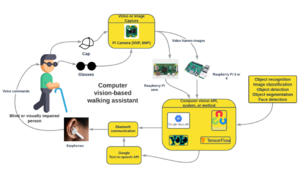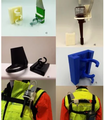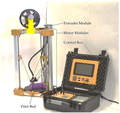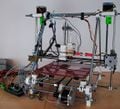
Disabled People deal with a series of barriers that limit their inclusion, empowerment, wellbeing, and role in society with a special emphasis in low and medium-income countries. One of these barriers is concerning the accessibility and affordability of assistive technologies (ATs) that help to enhance the quality of life of these persons. In this context, this systematic literature review (SLR) analyzes and describes how free and open-source hardware (OSHW) and open software (OSS) are employed in the design, development, and deployment of low-cost ATs. In the SLR process, different ATs were analyzed for disabilities such as visual, mobility, upper body, prostheses, hearing & speaking, daily living, and participation in society. The ATs were designed with diverse OSHW and OSS technologies such as Arduino, Raspberry Pi, NVidia Jeston, OpenCV, YOLO, MobileNet, EEG and EMG signal conditioning devices, actuators, and sensors such as ultrasonic, LiDar, or flex. 809 studies were collected and analyzed from the database Web of Science, GitHub, and the specialized journals in OSHW HardwareX and the Journal of Open Hardware during the years 2013-2022. In the first part of the SLR, the bibliometric trends and topic clusters regarding the selected studies are described. Secondly, the ATs identified with open source technologies, e.g., sensor-based or computer vision-based, are described along with a complete state-of-art about these based on each disability recognized. Finally, the issues and challenges to this approach are explored including technical factors, documentation, government policies, and the inclusion of disabled people in open source co-creation. The purpose of this study is to inform practitioners, designers, or stakeholders about low-cost (frugal) ATs with OSHW and OSS, and thus promote their development, accessibility, and affordability, contributing to benefit the community of disabled people.
Keywords[edit | edit source]
Assistive technologies, disabled people, persons with disabilities, adaptive aids, open hardware, open-source hardware, open-source software, systematic literature review
See also[edit | edit source]
- Emergence of Home Manufacturing in the Developed World: Return on Investment for Open-Source 3-D Printers
- Life-cycle economic analysis of distributed manufacturing with open-source 3-D printers
- Quantifying the Value of Open Source Hardware Development










































